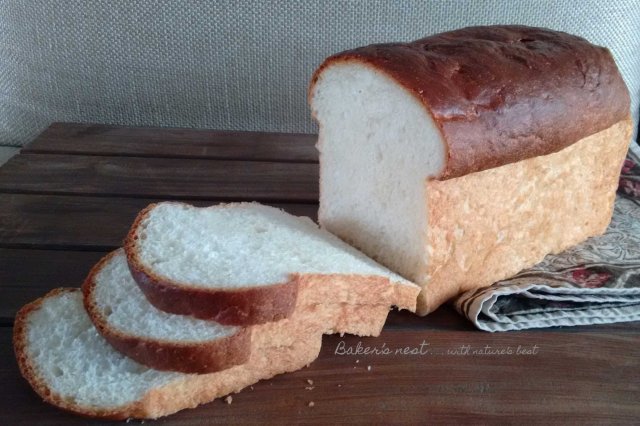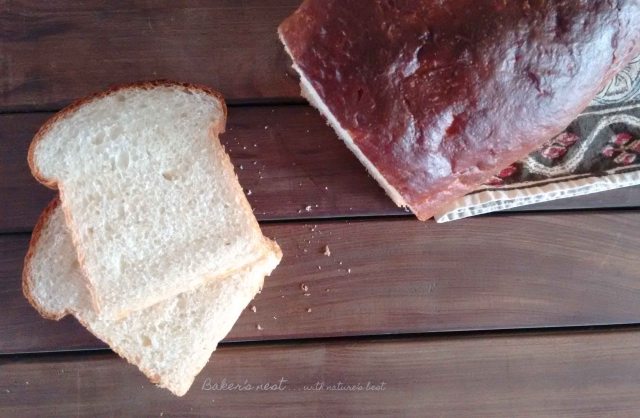
This is my first bread recipe on the blog and it had to be this milk bread. You would have read about my love for this milk bread here, typical from Iyengar bakery, since I was a child. This soft and slightly sweet bread takes you to heaven when you slather generous amount of butter on it. That’s my favourite way to have this bread.

This is a very easy recipe; just make sure that your yeast is good. I have had a long relationship with yeast and I had my initial good days followed by a long series of disasters. But, baking your own bread feels amazing and the aroma is heavenly. I have used active dry yeast, fresh yeast and instant yeast in my previous attempts and found that I am most comfortable with instant yeast, so this is what I have used here. Good yeast is crucial to a good bread and proof the yeast before you start making bread if you are unsure.

1 1/4 tsp instant dry yeast
3/4 cup luke warm milk
2 tbsp powdered sugar
2 tbsp clarified butter (ghee) or oil
3/4 tsp salt
2 1/4 cup bread flour or Maida.
Luke warm water as required
In a bowl add sugar and yeast and give it a stir. Add the luke warm milk, mix and let it sit for 5 mins till the mixture is frothy.
In a stand mixer add bread flour or maida, salt and mix well. Then add ghee or oil and run the mixer to incorporate the fat into the flour.
Then slowly add the yeast mixture to the flour in the stand mixer while mixing all the time. Follow it with required quantity of luke warm water to form a soft dough. The dough should be soft and sticky.
Knead the dough for 9 to 10 mins in the stand mixture. You can also the above process by hand, kneading for around 15 mins with the heel of your palm. Post kneading the dough should be soft and should come together as a ball. You can check the doneness with a window pane test. In this test take a small portion of dough and stretch it till it becomes translucent. If the stretched dough breaks before it could be stretched to the correct thickness then knead for some more time.
Transfer the dough to an oiled bowl. Spread some oil on top of the dough too. Cover the container with a cling film or a damp muslin cloth.
Now let the dough rest in a warm dark environment for an hour or more till it doubles its size. Do not keep checking the dough every now and then . . . let the yeast work in peace.
When the dough doubles in size, roll the dough into a log shape and place it in a greased loaf pan with the seam side at the bottom. Here, I have used an 8 inch X 4 inch loaf pan.
Now keep the loaf pan in a warm dark place un-disturbed for almost an hour for the second rise.
When the dough has risen above the pan carefully place the pan in a 200 degree centigrade preheat oven. Bake for 25 to 30 mins till you get a hollow sound when you gently knock on the bread.
Let the pan rest for 10 mins once out. Then with a knife loosen the sides of the bread from the pan and pop the bread out of the pan and onto a cooling rack to cool completely. Slice the bread with a bread knife when the bread is cooled.
